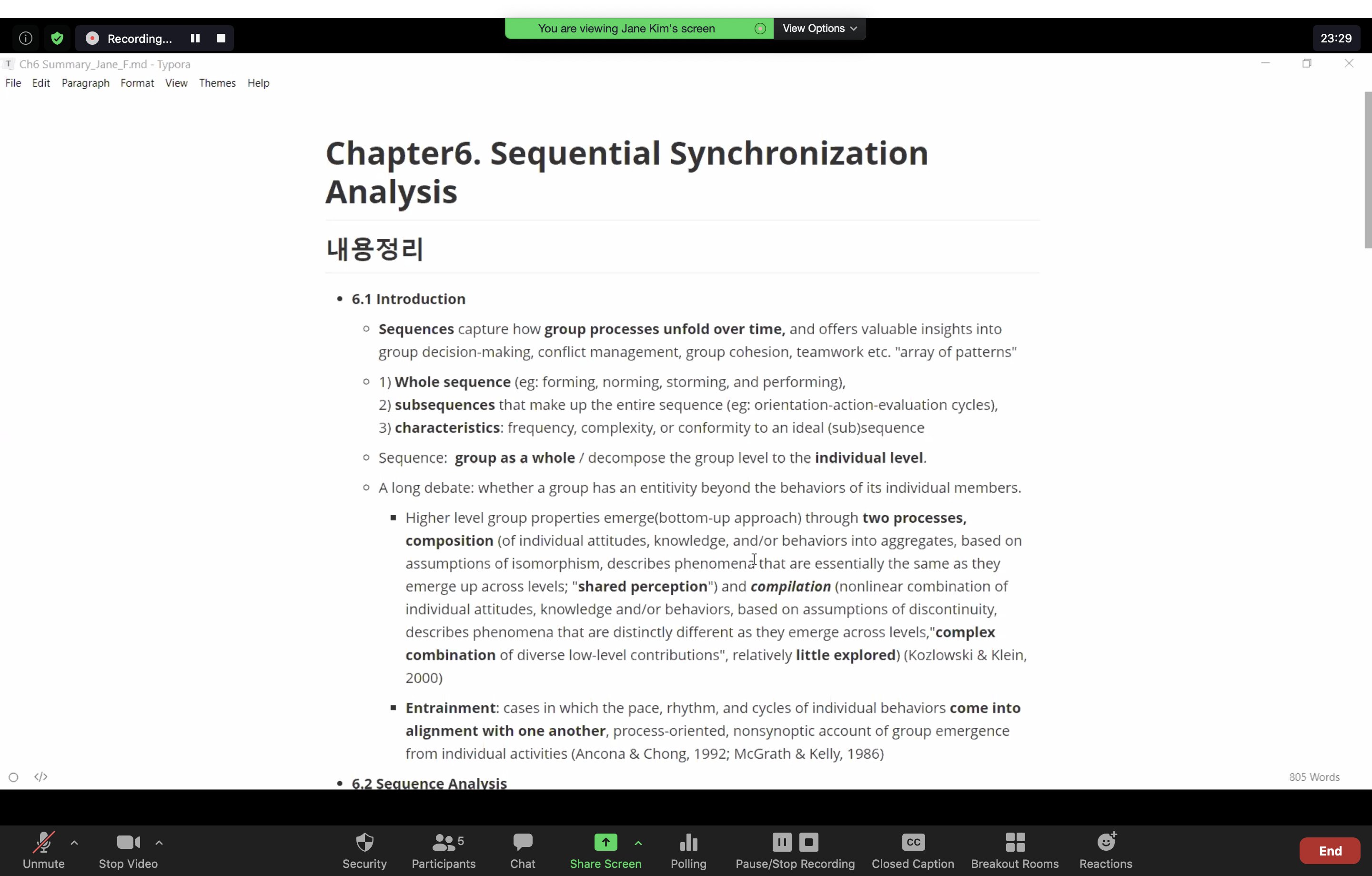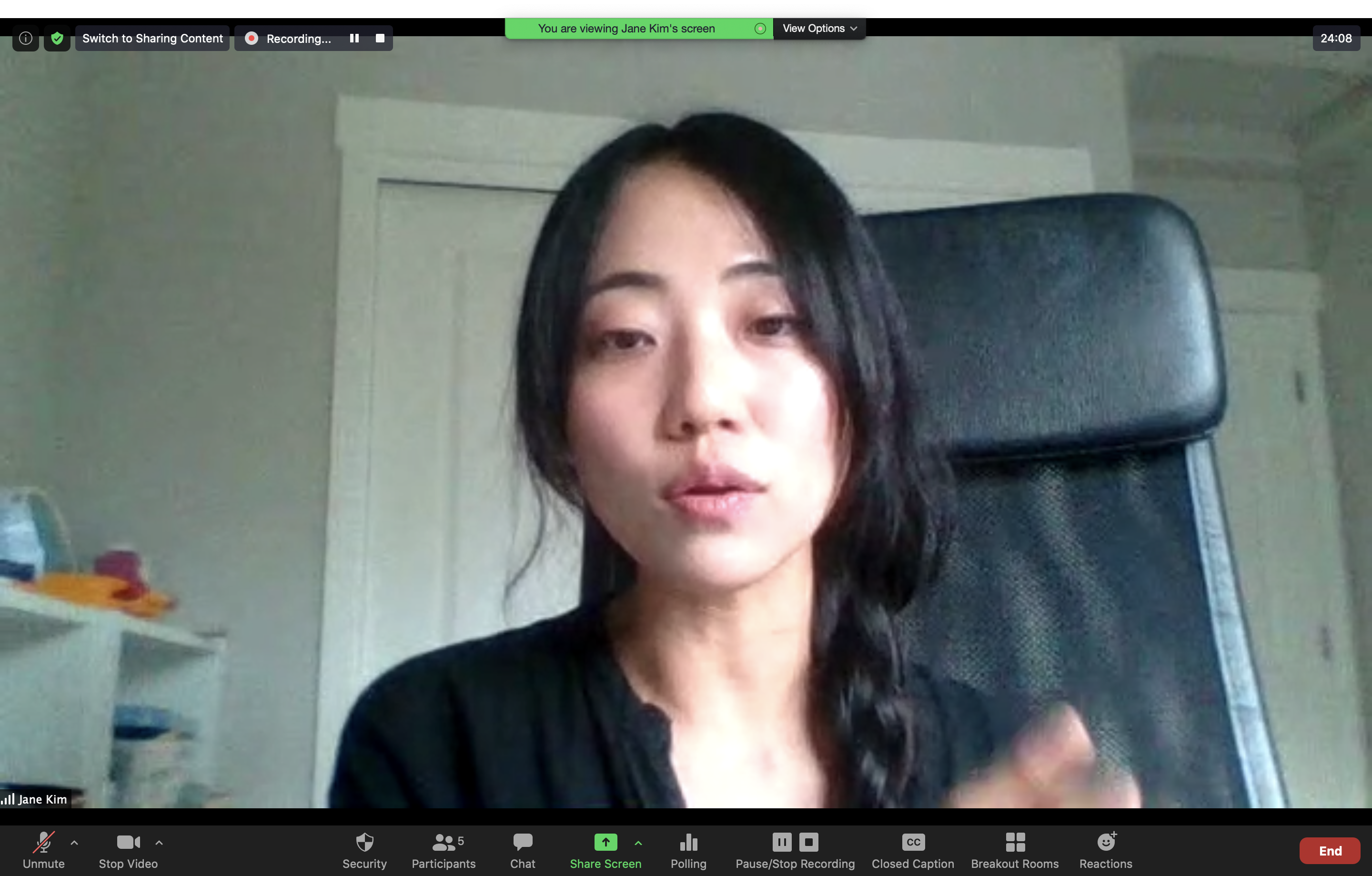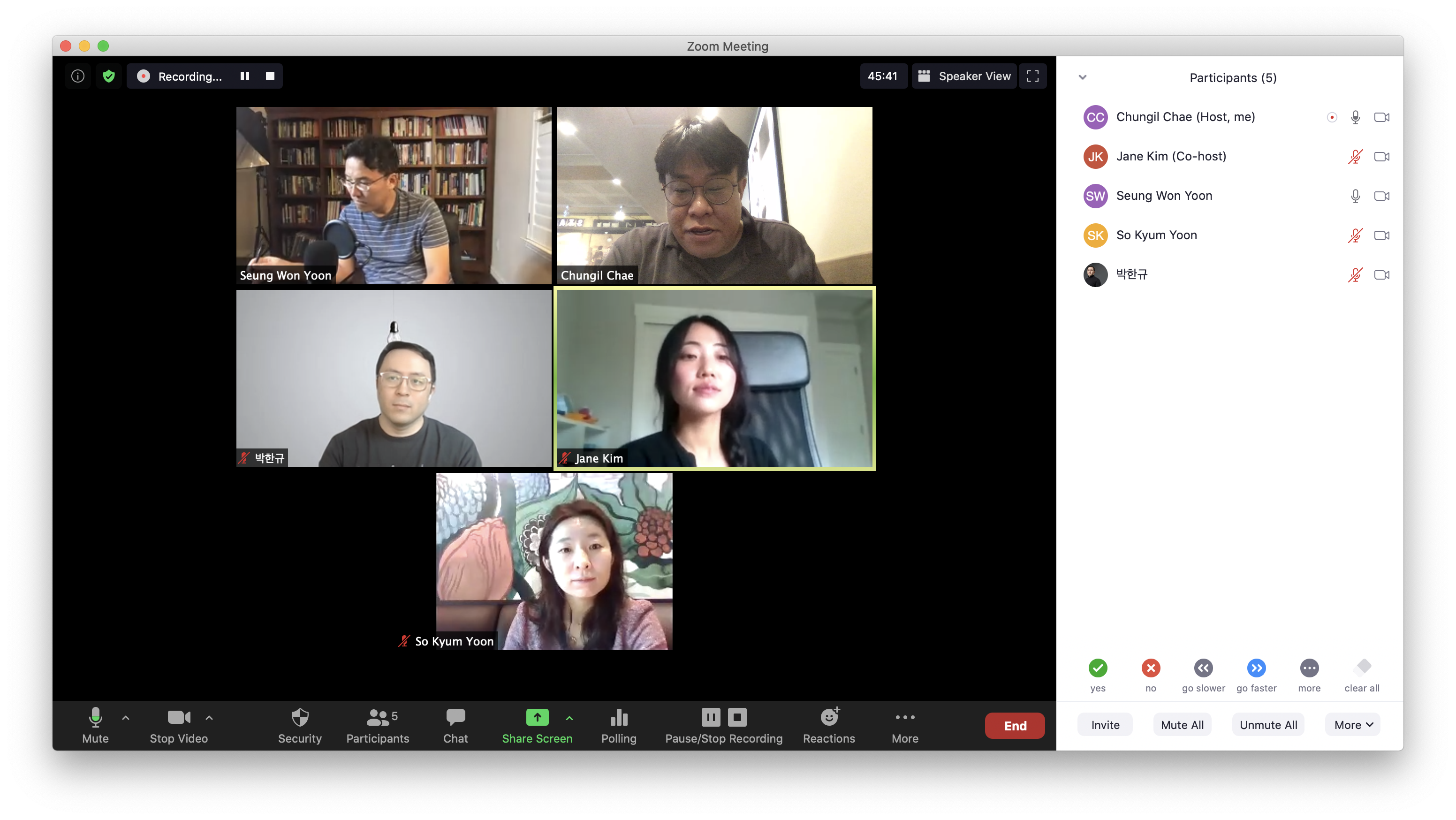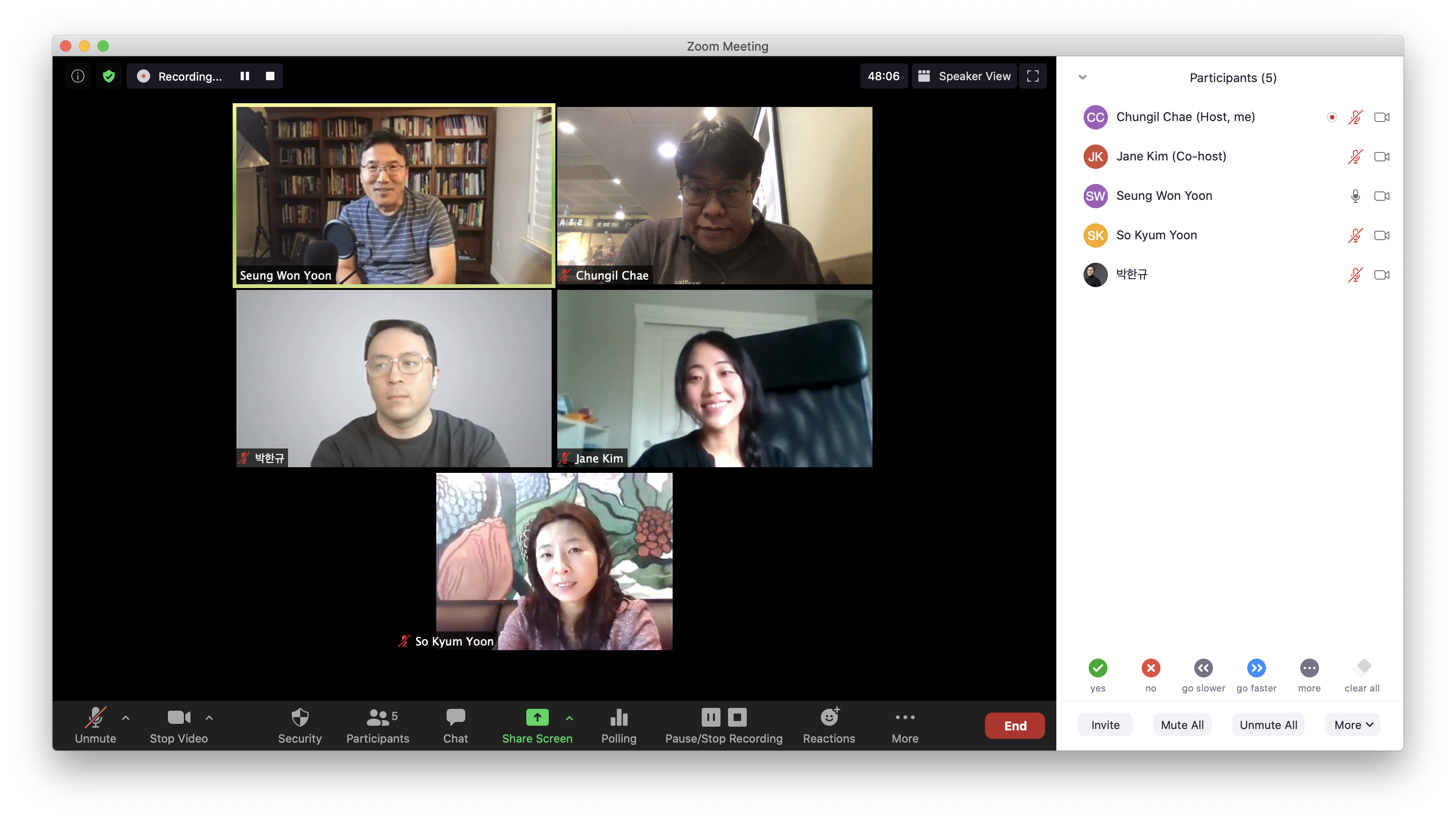7 Session 6: Sequential Synchronization Analysis
7.1 내용정리
6.1 Introduction
- Sequences capture how group processes unfold over time, and offers valuable insights into group decision-making, conflict management, group cohesion, teamwork etc. “array of patterns”
- Whole sequence (eg: forming, norming, storming, and performing),
- subsequences that make up the entire sequence (eg: orientation-action-evaluation cycles),
- characteristics: frequency, complexity, or conformity to an ideal (sub)sequence
- Sequence: group as a whole / decompose the group level to the individual level.
- A long debate: whether a group has an entitivity beyond the behaviors of its individual members.
- Higher level group properties emerge(bottom-up approach) through two processes, composition (of individual attitudes, knowledge, and/or behaviors into aggregates, based on assumptions of isomorphism, describes phenomena that are essentially the same as they emerge up across levels; “shared perception”) and compilation (nonlinear combination of individual attitudes, knowledge and/or behaviors, based on assumptions of discontinuity, describes phenomena that are distinctly different as they emerge across levels,“complex combination of diverse low-level contributions,” relatively little explored) (Kozlowski & Klein, 2000)
- Entrainment: cases in which the pace, rhythm, and cycles of individual behaviors come into alignment with one another, process-oriented, nonsynoptic account of group emergence from individual activities (Ancona & Chong, 1992; McGrath & Kelly, 1986)
6.2 Sequence Analysis
Data source: observations records, audio, video, group/team simulations, internet/mobile devices
Analyzing Sequences: (초기) total number of each type of act in sequence -> find unique patterns of information to evaluate 1) similarities in structure, 2) function between sequences.
- Whole sequence analysis
- Temporally-based team process: Team engage in two types of phases, transition phases (planning, strategizing) -> action phases (directly contributing to performance) Marks et al. (2001)
- Flexible Phase Mapping: identify various sequences and methods to compare/classify sequences into types -> when specific activity phases occurred & in what order
- Optical matching (OM:최적일치법): assess the degree of difference between pairs/sets of sequences (eg: ABC and ADE, distance is 3, can assign weighted differences to each pair)
- Subsequence analysis
- Act-to-act sequence: plan-act-evaluate behavioral cycle model of effective team activity Tschan (1995) “An ideal cycle should start with orienting or planning and would end with an evaluation”
- Identify specific cycles of behaviors team members engage in, and what emerged (eg: moods) through short-cycle. Lehmann-Willenbrock et al. (2011)
- Analyze emergent processes (eg: social entrainment among team members, using sequential synchronization analysis)
- Whole sequence analysis
6.3 Sequential Synchronization Analysis
- Individual sequences into group processes: sequence for each member -> determine team level dynamics. compositional (similar, can combine or average) or compilational (different, pattern matters) models
- Entrainment: Multiple activities, initially operating in different rhythms, eventually
get locked into the same rhythmic pattern (상호영향, 주요멤버에게 맞춤, 외부 사건 등)
-> synchronization among members is a mechanism underlying the group-level phenomena
- Types: synchronic entrainment / tempo entrainment / harmonic entrainment.
6.4 A Step-by-Step Guide to Sequential Synchronization Analysis
- Step 1: Theoretically Define the Units of Interest
- Using theoretical guidance, evaluate what events need to include, in what order, for how long
- Step 2: Extract Subsequences from Data
- R package TraMineR / Stata SAID
- 3 decision points: subsequence length (how many units) / how many shifts are allowed to be part of short sequences (eg:3) / how far apart the behaviors within the same shift are allowed
- Counting operations: COBJ / CWIN / CDIST_O / CDIST
- Step 3: Revisit Theoretically Defined Subsequences in Light of Sequence Mining Results
- Only those subsequences which indicate the target constructs within the theoretical framework should be retained and all the rest should be discarded.
- Step 4: Aggregate Frequency Counts of Subsequences for Data Segments
- Yield values of the number of subsequences devoted to each theoretical categories, for each member
- Step 5: Compute Synchronization Scores
- Assess entrainment by calculating the degree and type of synchronization across the individual member time series (using phase-lock calculation, kurtosis value)
- Step 1: Theoretically Define the Units of Interest
6.5 Example (computerized simulation data, using TraMineR, Synchrony of R Package)
- Step 1: Decide what elements the sequences must contain
- Step 2: Break the data into time segments (eg:20-second each), Identify all sequences within each segment to create time-series data per member, Count operations if contains one of the identified sets of behaviors in certain order (eg: different ways in which members engage in team coordination) (H,I,C: Go w/ team, Go alone, Atk / F1,E: Enemy die, Comm. / A,G: Pick-up info, EXG info)
- Step 3: Discard duplicates and adjust counts
- Step 4: Calculate on the extent to which members’ activities over time were phase-locked
- Kurtosis scores across all pairs: values closer or larger than 3 indicate those 2 members are entrained to each other (higher peak than the normal distribution)
- Which pair are more synchronized, Which member is inactive..etc
6.6 Discussion
- Team/group research mainly rely on compositional forms such as taking average scores
- Sequential synchrony analysis enables researchers to capture compilational forms of emergence
7.2 더 읽어볼 자료
- Verbal Interaction Sequences and Group Mood: Exploring the Role of Team Planning Communication
- Communication enhances small group performance if it conforms to task requirements: The concepts of ideal communication cycles
- 공기업 사무직 근로자의 경력경로, 특성 및 관련 변인
7.3 스터디현장



